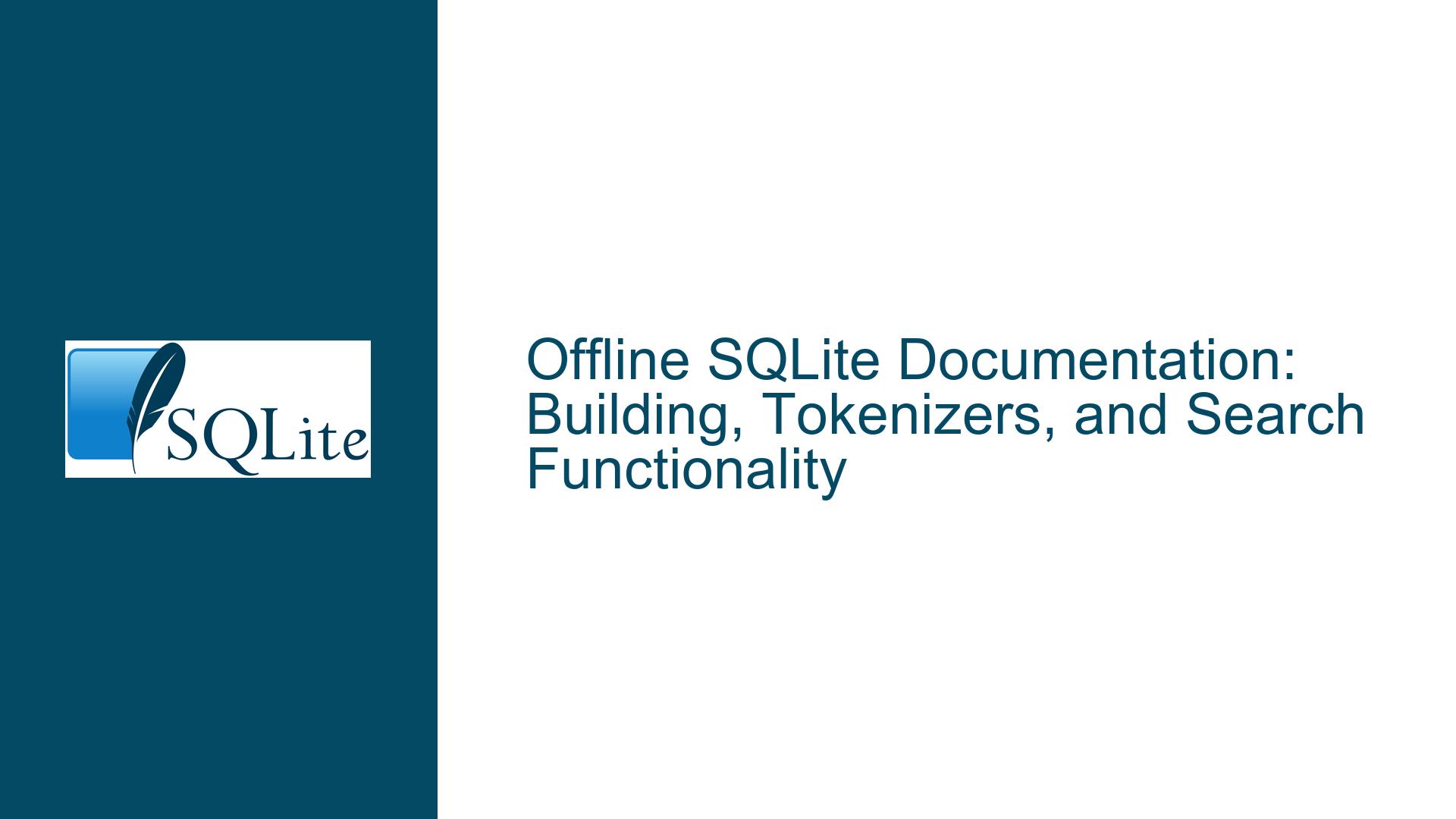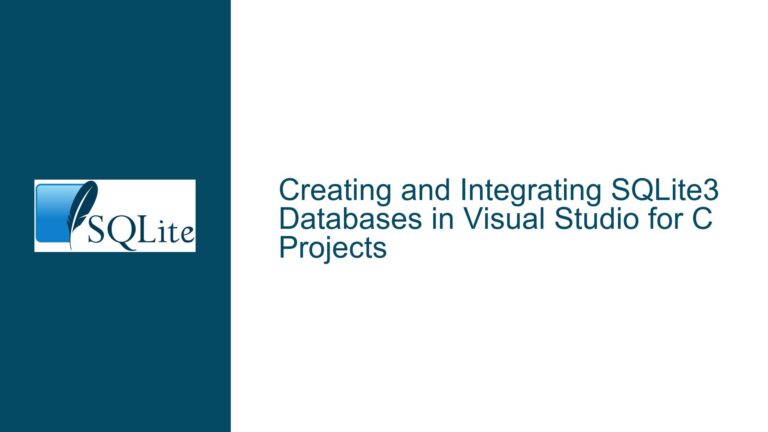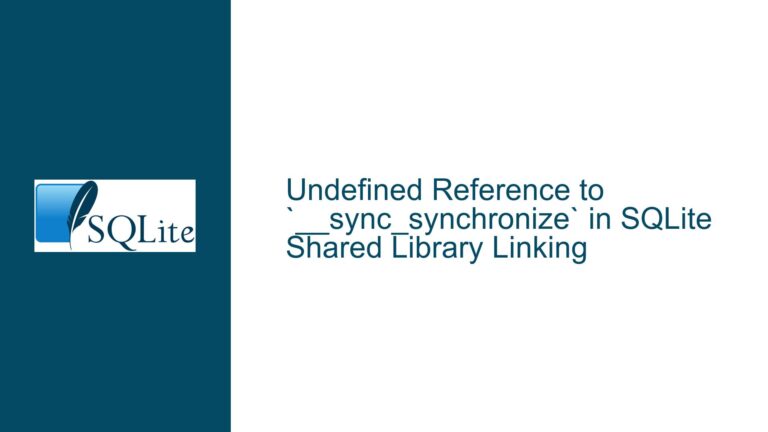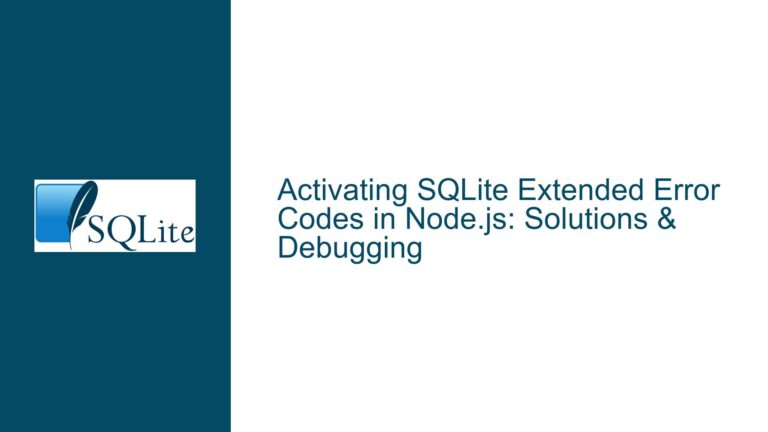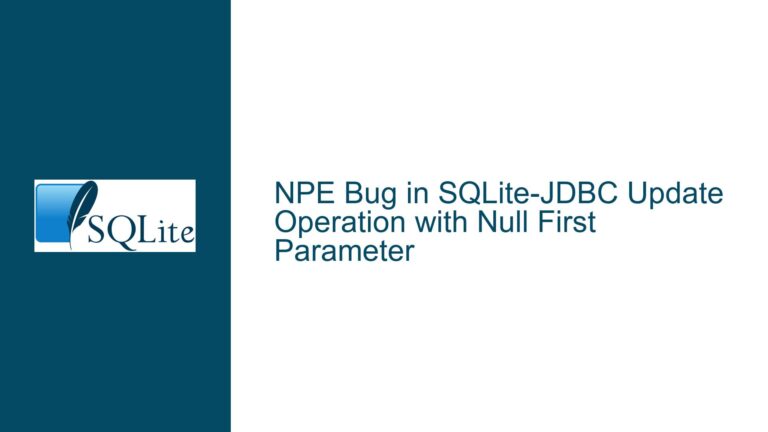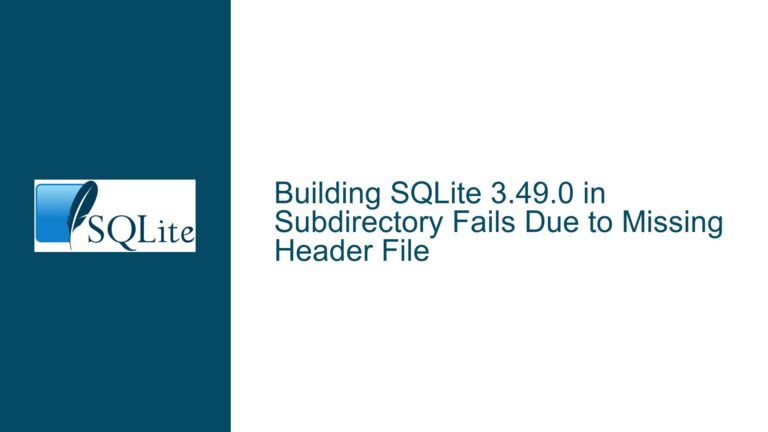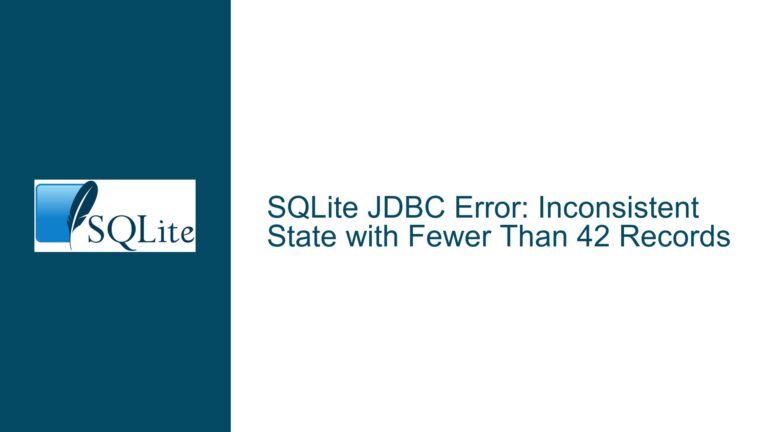Offline SQLite Documentation: Building, Tokenizers, and Search Functionality
Building SQLite Documentation Locally: Prerequisites and Process
Building SQLite documentation locally requires a clear understanding of the prerequisites, the relationship between the SQLite source tree and the documentation source tree, and the tools necessary to compile and render the documentation. The documentation source tree, available at https://sqlite.org/docsrc, contains all the files needed to generate the HTML documentation. However, this process is not standalone; it depends on several external components.
First, the SQLite source tree must be downloaded and placed in a directory adjacent to the documentation source tree. This is because the documentation build process references SQLite’s internal headers and utilities. Without the SQLite source tree, the build will fail due to missing dependencies. Additionally, TCL development libraries are required, as the documentation build process relies on TCL scripts for automation and rendering. TCL is used extensively in SQLite’s build system, and its absence will prevent the documentation from being generated.
Another critical dependency is Pikchr, a tool for generating diagrams from a text-based markup language. Pikchr is used in the SQLite documentation to create visual representations of concepts, such as database schemas and query execution plans. Without Pikchr, the documentation will lack these diagrams, reducing its utility. Pikchr can be installed from its official website, https://pikchr.org, and must be available in the system’s PATH for the build process to succeed.
Once all prerequisites are met, the documentation can be built by navigating to the documentation source tree and running the appropriate build commands. The exact steps are outlined in the build instructions on the SQLite website. The result is a set of HTML files identical to those available on the official SQLite documentation website. These files can be browsed locally, providing an offline reference for SQLite’s features and APIs.
However, building the documentation locally is not always necessary. The SQLite project provides pre-built documentation in the form of a ZIP archive, available on the Download page under the "Documentation" subheading. This archive contains the same HTML files as the online documentation and can be downloaded and unpacked for offline use. This is often the simplest solution for users who need offline access to the documentation without the complexity of building it from source.
Understanding the Role of Tokenizers in SQLite Documentation Search
The SQLite documentation includes a powerful search functionality powered by the Full-Text Search (FTS5) extension. This feature allows users to quickly locate relevant sections of the documentation by querying a pre-built FTS5 database. However, the search functionality relies on a custom tokenizer designed specifically for the SQLite documentation. This tokenizer is responsible for breaking down the text into searchable tokens, which are then indexed by the FTS5 engine.
The tokenizer used in the SQLite documentation is not part of the standard SQLite distribution. Instead, it is included in the documentation source tree and must be built separately. This tokenizer is optimized for the structure and content of the SQLite documentation, ensuring accurate and relevant search results. Without this tokenizer, the search functionality will not work as intended, as the default FTS5 tokenizer is not tailored to the documentation’s specific needs.
The tokenizer is particularly important for handling HTML content, as the SQLite documentation is written in HTML. The tokenizer must be able to parse HTML tags and extract meaningful text for indexing. This requires specialized logic to ignore irrelevant tags and focus on the content that users are likely to search for. The tokenizer also handles edge cases, such as inline code snippets and hyperlinks, ensuring that they are indexed correctly.
For users who want to use the pre-built FTS5 database included in the documentation ZIP archive, the tokenizer is not required at runtime. The database is already indexed using the custom tokenizer, and queries can be executed against it without rebuilding the index. However, if the user wishes to modify the documentation or add new content, the tokenizer must be available to reindex the updated content.
The tokenizer is built as part of the documentation build process and requires a custom TCL interpreter that includes SQLite. This interpreter, named tclsh.docsrc, is built from the documentation source tree using the make tclsh.docsrc command. Once built, the interpreter can be used to run the search script included in the documentation bundle. The search script relies on the custom tokenizer to process queries and return results from the FTS5 database.
Troubleshooting Search Functionality in Offline SQLite Documentation
The search functionality in the offline SQLite documentation is a valuable feature, but it can be challenging to set up and troubleshoot. The search script included in the documentation bundle relies on several components, including the custom TCL interpreter (tclsh.docsrc), the FTS5 database, and the custom tokenizer. If any of these components are missing or misconfigured, the search functionality will not work.
The first step in troubleshooting the search functionality is to ensure that the custom TCL interpreter is built and available. The interpreter is built from the documentation source tree using the make tclsh.docsrc command. If this command fails, it may be due to missing dependencies, such as the SQLite source tree or TCL development libraries. The build process should be carefully reviewed to identify and resolve any issues.
Once the interpreter is built, the search script must be configured to use it. The script includes a shebang line that specifies the path to the interpreter. This path must be updated to reflect the location of the tclsh.docsrc binary on the user’s system. For example, if the interpreter is located at /home/user/sqlite-docs/tclsh.docsrc, the shebang line should be updated accordingly:
#!/home/user/sqlite-docs/tclsh.docsrc
If the shebang line is incorrect, the script will fail to execute, and the search functionality will not work. The script can be tested by running it directly from the command line. If it executes successfully, it should start a web server that serves the documentation and provides access to the search functionality.
The FTS5 database is another critical component of the search functionality. The database is located in the search.d directory of the documentation bundle and contains the indexed content. If the database is missing or corrupted, the search functionality will not work. The database can be rebuilt using the custom tokenizer, but this requires access to the documentation source tree and the necessary build tools.
For users who do not wish to rebuild the FTS5 database, the pre-built database included in the documentation bundle can be used as-is. However, the search script must be configured to point to the correct database file. This is typically handled automatically by the script, but it is worth verifying that the database file is present and accessible.
Finally, the search functionality relies on a web server to serve the documentation and handle search requests. The documentation bundle includes a lightweight web server called althttpd, which can be used to serve the documentation locally. If the web server is not running, the search functionality will not be accessible. The server can be started by running the following command from the documentation directory:
althttpd -page index.html
This command starts the web server and serves the documentation at http://localhost:8080. The search functionality can be accessed by navigating to the search box in the top-right corner of the documentation page. If the search functionality is still not working, it may be necessary to review the server logs for errors or consult the althttpd documentation for additional configuration options.
In summary, troubleshooting the search functionality in the offline SQLite documentation involves verifying the custom TCL interpreter, configuring the search script, ensuring the FTS5 database is accessible, and running a web server to serve the documentation. By carefully reviewing each component and addressing any issues, users can successfully enable and use the search functionality in their offline documentation.
